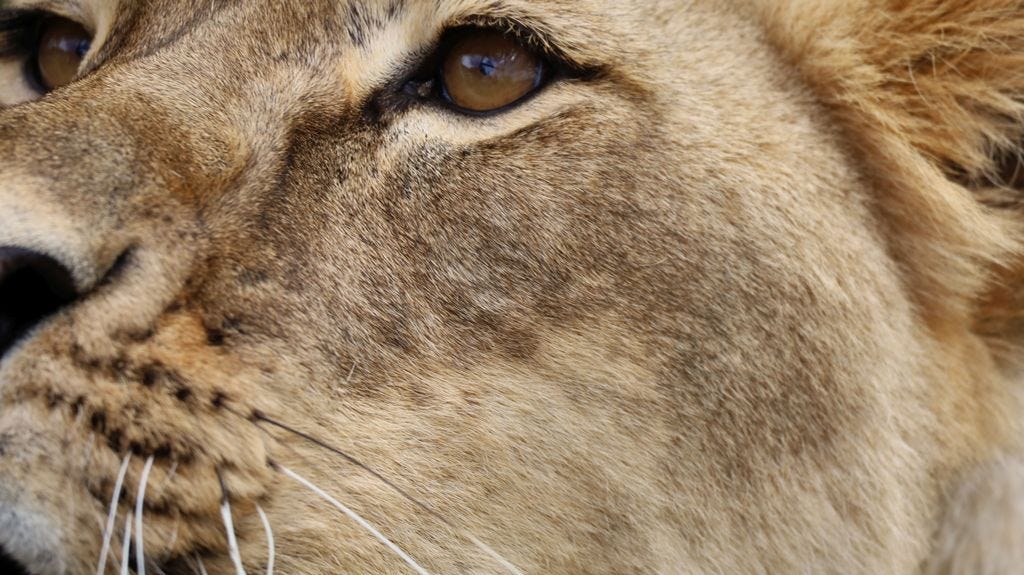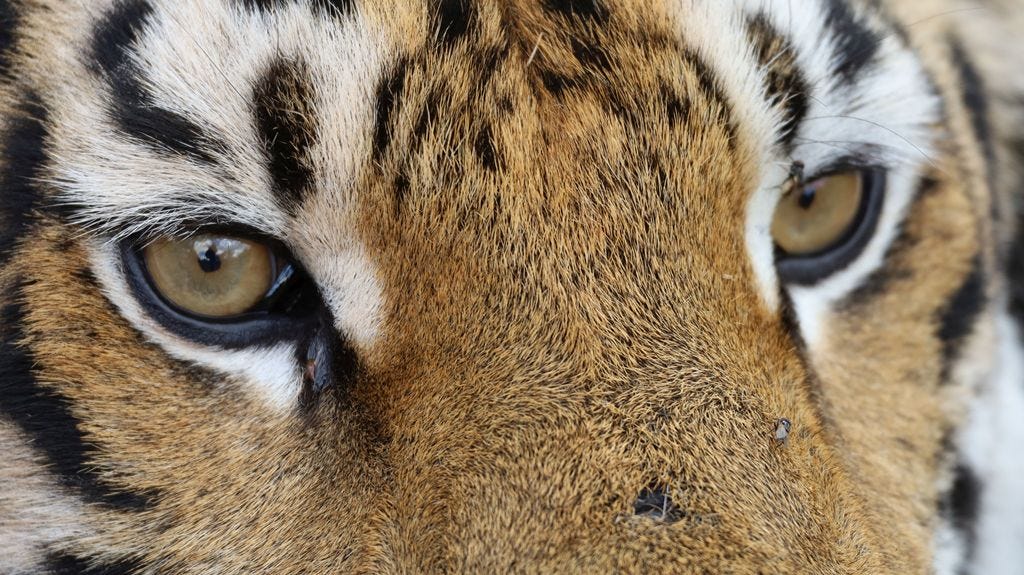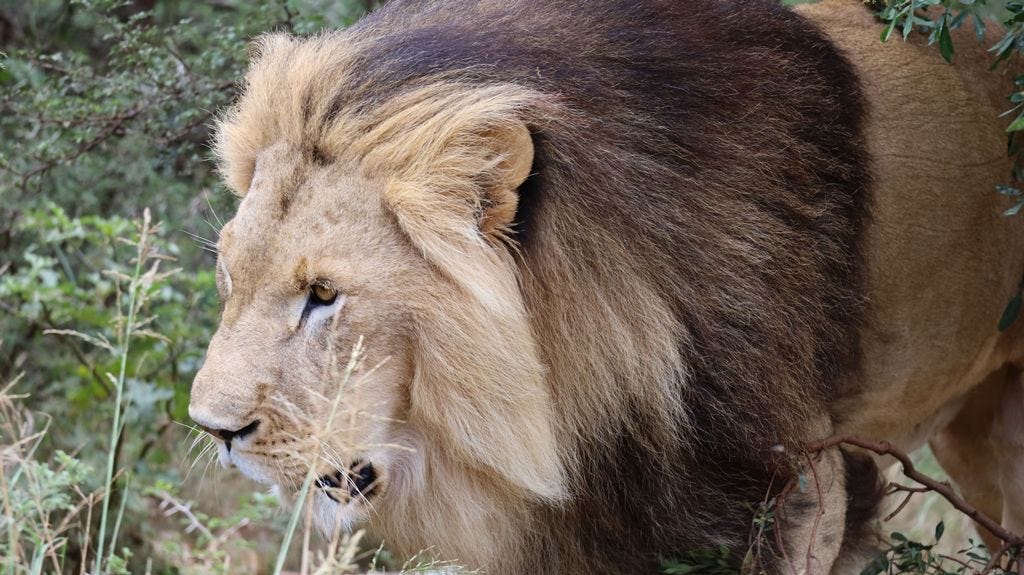Big cat encounters at photographer’s paradise
Rescued from lives of abject misery, lions – and one tiger – enjoy life at Eastern Cape animal sanctuary

ON any safari the ‘mane’ attraction will always be lions but, because they are primarily nocturnal hunters, it can be really difficult to see them during daylight hours. Even if you are lucky enough to come across a lion/lions in a game park, you will also almost certainly be part of a pack of tourists jostling to get close to these elusive animals.
However, there is a way to almost certainly guarantee a lion sighting – in broad daylight, without a safari vehicle in sight and on foot!
That special experience comes courtesy of Simbonga Game Reserve and Sanctuary, an easy 45 minute drive from the city formerly known as Port Elizabeth. Simbonga is not only home to a large number of rescued lions, but also one tiger, a species not normally found on South African soil, but brought to the reserve during one of many rescue missions carried out mainly in Ukraine.
Gina, whose tail had been ripped off probably by another hungry animal, was rescued from a private zoo – in the loosest sense of the word – in Mid-Western Ukraine. Before her arrival at Simbonga, Gina’s life was a sad one indeed, being confined to a small cage, its wooden floor caked with old food and faeces.

Despite being the only tiger at Simbonga, Gina seems to have settled in well, lapping up her life of luxury on South African soil. But for the many lions, including Cher, Hercules, Khaya, Arslan and Jen who were part of Gina’s rescue mission, being at the reserve is merely a case of ‘coming home’ .
Arslan and Jen, believed to have been donated to a Ukrainian zoo by a South African breeding farm, were also rescued from a miserable life. Far from the sunny rays and warmth of their native land, the brother and sister pair endured dismal conditions in captivity, where bitterly cold winters with little if any protection from the elements became a norm for them.
Their older sibling Khaya was also part of that particular rescue – up until then, Khaya lived out her life confined to a 30 square metre cage, at some stage losing half her tail due to stress. When she arrived at Simbonga in January 2022, it is believed to have been the first time in four years that she had felt grass under her feet, if, in fact, she ever had.
But it is not just zoos that inflicted unbelievable suffering on lions rescued from the Ukraine – keeping pet lions in cramped flats was not unusual in Ukraine. One example is Akera a ‘pet’ abandoned to her fate when her owners emigrated to Poland, leaving the poor animal, still a cub, behind to fend for herself.

On a somewhat happier note, Nala was also purchased as a cub, but the owners soon realised that they had made a mistake, contacting Warriors Of Wildlife who were more than happy to step in. She was introduced to brothers Alex and Caesar, the trio formed a bond and now are a happy mini pride at Simbonga.
Nala, and most of the other lions at Simbonga, have lost none of their predatory skills despite what they have been through and will single out the young, frail and even the sick for special attention of the “I would like to eat you kind.” On quite a few occasions during a recent visit, my four-year-old granddaughter became a very obvious person of interest, leaving her giggling hysterically at the thought of being lion lunch. Not that it could happen, all the big cats at Simbonga are kept in spacious and secure enclosures.
Despite not having lost the instinct to hunt, the big cats at Simbonga can never be introduced to life in the wild as they have had too much contact with humans and have never had to hunt for themselves.

But Simbonga is not just about being up close with these awesome animals – and there are a lot more rescued lions at the reserve than have been mentioned here. There are a number of marked hikes of differing length, all offering views throughout the reserve and the possibility of encountering free roaming wildlife including giraffe, zebra, blue wildebeest, kudu, impala, nyala, waterbuck, and more. Bird life is also spectacular, with over 100 different bird species documented on the reserve.
Guests can enjoy a self-drive safari as long as they have a four by four vehicle.
But that, as the saying goes, is not all. For those who want to enjoy more of this back to nature experience, possibly hearing the lions roar at night, a variety of self-catering accommodation is available at this photographer’s paradise.
Included in the very reasonable entry fee is a tour of The Warriors of Wildlife Sanctuary where the rescued big cats reside. Tours are held at designated times throughout the day with limited numbers of guests. Each tour is approximately 1.5 hours long.
Warriors of Wildlife, who specialize in the rescue, relocation, and care of abused wildlife joined forces with Simbonga to create a unique facility catering not only to the needs tourists who not want to learn about the plight of abused wild animals but also to the needs of animals desperately needing new homes.
Day visits and tours of the sanctuary need to be booked in advance and, while deposits do not need to be paid at this stage, simply failing to honour a booking – which happened the day we were there – is not something a place that is doing so much good deserves.
The cost of a day visit, sanctuary tour included, is a very reasonable R150 per adult and R50 per child, aged two to 12 years. And while sanctuary tours do not come at an additional fee it is well-worth remembering that the sanctuary is non-profit based. As such any donations towards the animals' ongoing care is, well, the right thing to do.







